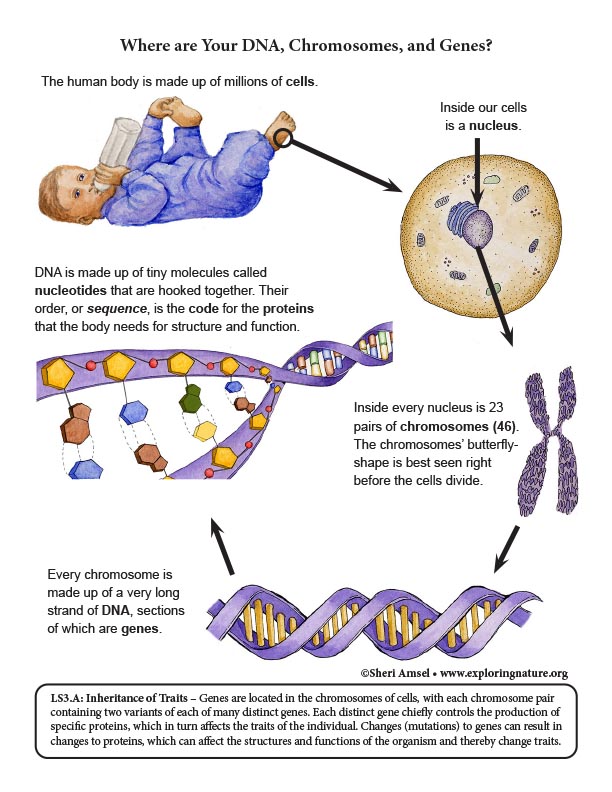

DNA is stored in the nucleus of each cell. It is wound up and coiled in butterfly-shaped chromosomes. We only actually see chromosomes in their distinct butterfly-shape right before the cells divide (this is called metaphase). Each chromosome is made up of one long DNA molecule. Each gene on the chromosome is a distinct segment of the DNA. The genes will code for the formation of proteins that will determine an organism's traits and characteristics. This is why we say that our DNA is our genetic map. Not all the genetic coding is for protein development. Some DNA coding affects regulation in the body or structural functions. And some coding has no function that we have found yet.
When you research information you must cite the reference. Citing for websites is different from citing from books, magazines and periodicals. The style of citing shown here is from the MLA Style Citations (Modern Language Association).
When citing a WEBSITE the general format is as follows.
Author Last Name, First Name(s). "Title: Subtitle of Part of Web Page, if appropriate." Title: Subtitle: Section of Page if appropriate. Sponsoring/Publishing Agency, If Given. Additional significant descriptive information. Date of Electronic Publication or other Date, such as Last Updated. Day Month Year of access < URL >.
Amsel, Sheri. "Where is your DNA, Chromosomes, and Genes? Diagram" Exploring Nature Educational Resource ©2005-2025. March 20, 2025
< http://www.exploringnature.org/db/view/Where-is-your-DNA-Chromosomes-and-Genes-Diagram >
